Bert's Town - Part 02 - Beginning The Trails
w/e 22 March 2009
All this week's pictures were taken
with a Kodak DX6490

In the introduction and first part of our look around
Bert's Town (Eastwood) we concentrated on the outlying areas
and saw some of the sites associated with D H Lawrence (Bert)
and his writings. Several of those sites were on the main road
between Brinsley and Eastwood and it is to Mansfield Road that
we now return to begin following the Blue Line and Heritage Trails.
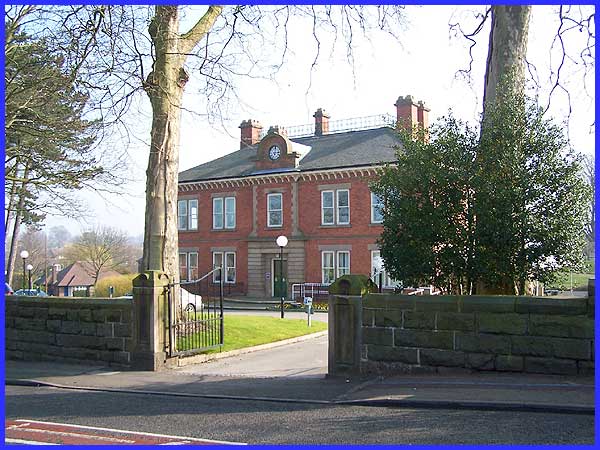
Both trails start outside the Durban House Heritage Centre which
also featured in Bert's life and his writing. The centre contains
exhibits of the life and times of Lawrence but at the time of
writing is facing an uncertain future due to a proposed cut in
the level of funding from the local council who acquired the
building in 1995. Lawrence used Durban House which was built
in 1876 as offices for the Barber, Walker Coal Company as a location
in "Sons and Lovers" and it was well known to him as
he would often collect his father's wages from here whilst still
a boy. Today (for the time being at any rate) the Centre houses
conference, meeting and training facilities, a restaurant and
the Rainbow Gallery for contemporary visual arts.
|
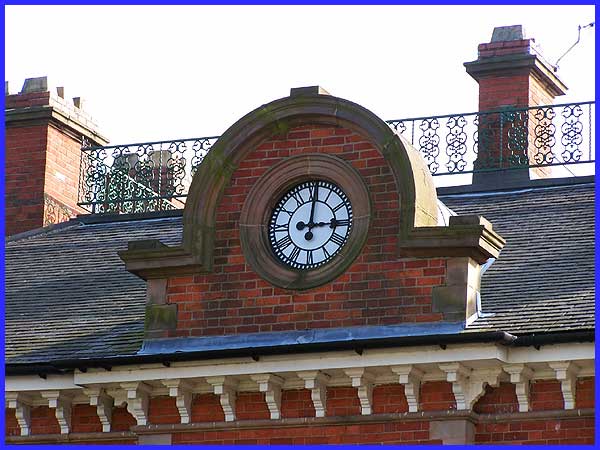
Since its acquisition by the Broxtowe Borough Council, the Heritage
Centre has undergone extensive refurbishment including the fitting
of a new clock in 1998. The original clock could not be found
during the renovation work but a new clock was donated by the
contractors Mowlem and Company. An interesting aside to this
is that the mains powered clock has an automatic device to restart
it at the correct time in the event of a power failure which
can also be used to control British Summer Time changes - only
it doesn't seem to be working! This picture was taken at 9:53am
despite what you may see above. I imagine that in Bert's day
the miners would depend on the accuracy of the clock and it would
not have been allowed to show the incorrect time.
|

So it is from outside the Heritage Centre that we begin to follow
the trails up the Mansfield Road hill towards the centre of the
town. The Blue Line Trail indicated as might be expected by a
painted blue line along the footpath is the first of its kind
in England and approval for its use had to be obtained from the
Government's Department of Transport. The inspiration for the
trail came from the red-lined Freedom Trail of Boston USA. A
second route which follows some of the same route is the Literary
Trail and this is indicated by small phoenix symbols embedded
in the tarmac, two of which are visible in the above image. This
second trail came about as part of the Eastwood Phoenix Project
which was set up to prevent decline, regenerate and help Eastwood
to remain a market town for the community around it. The phoenix
of course represents something rising from the ashes or new life
from old and DHL adopted it as his personal symbol. Posthumously
a collection of his papers were published under the title "Phoenix"
in 1936 and a second collection "Phoenix II" in 1968.
|
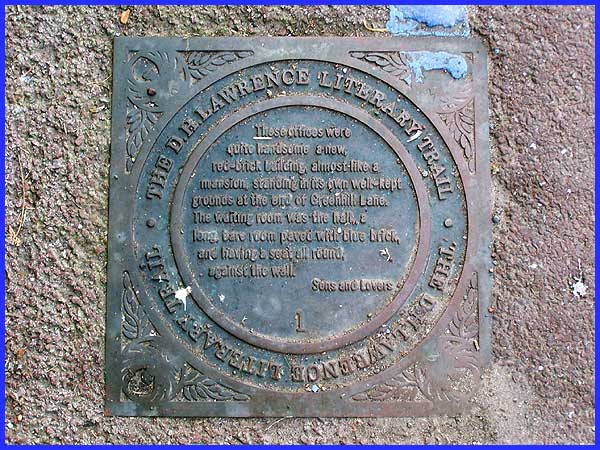
At various points along the trails are numbered information boards
(Blue Line) and engraved plaques (Literary) bearing information
about the writer and quotations 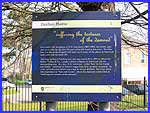 from his works. The board here (left)
tells about the Barber Walker offices, how he collected his father's
wages and mentions that he later included it in "Sons and
Lovers" while the plaque seen both in the previous image
and viewed here from directly above contains the relevant quotation
from the book: from his works. The board here (left)
tells about the Barber Walker offices, how he collected his father's
wages and mentions that he later included it in "Sons and
Lovers" while the plaque seen both in the previous image
and viewed here from directly above contains the relevant quotation
from the book:
"These offices were quite handsome; a new, red-brick
building, almost like a mansion, standing in its own well-kept
grounds at the end of Greenhill Lane. The waiting room was the
hall, a long, bare room paved with blue brick, and having a seat
all round, against the wall."
|

A second board stands at the entrance to Princes Street at its
junction with Mansfield Road. Princes Street today shows some
obvious signs of regeneration but has retained the character
of the mining village of Bert's day. The information on the board
explains the history of the area and reads:
The 19th century saw a huge increase in the amount of coal
produced by this region. This in turn led to a steady influx
of workers and their families coming to Eastwood to be part of
the hard and dangerous, but well-rewarded coal mining trade.
Eastwood had to expand physically to meet the need of its growing
population.
|
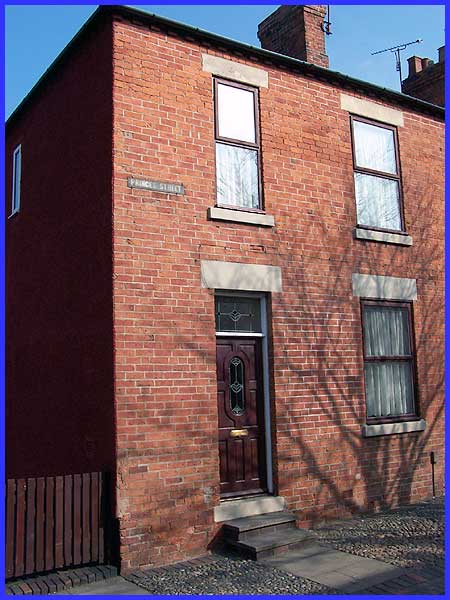
This typical cottage at the end of Princes Street still has what
looks like the original street name plate. The information on
the board continues:
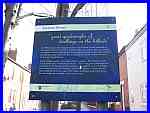
Barber Walker and Co., the local colliery company, built houses
in this area to house their workforce of miners. They were great
quadrangles of buildings on the hillside known locally as 'the
squares' or 'the buildings'. Lawrence later described them as
"sordid and hideous." Princes Street, ahead, formed
the lower edge of the square and gives some sense of how the
area might have looked in Lawrence's time.
|

